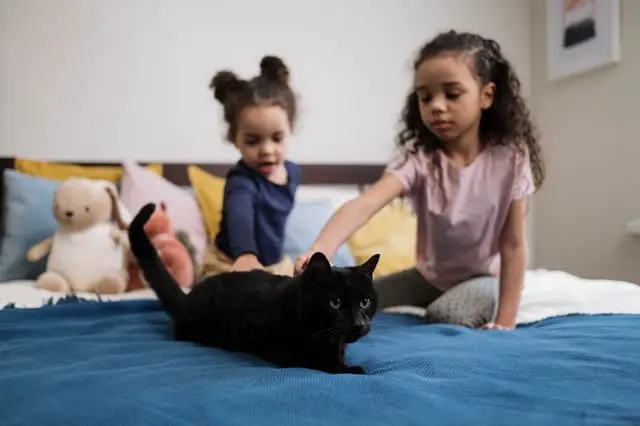
Tips for cat bowel care, a series of useful tips to keep your pet’s intestine healthy.
These furry ones become part of our life and often take up our unhealthy habits, basically because we don’t care enough for his nutrition, his coat, his exercise and much more.
Tips for cat intestinal care

The tips for cat intestinal care that we would like to give you mainly concern the general care of your cat. The intestine of the animal as well as of man is the second brain. Why is it called such?
Because it is closely linked to the psyche and also keeping the intestine informed means taking care of the body at 360 °. Indeed, the cat alone cannot do this, we have to take care of him. Therefore, below you will find some tips for cat intestinal care.
Diet
Among the tips for cat bowel care there is first of all the choice of the cat’s food which is the basis of everything. An adequate diet, useful to support its natural defenses, is certainly useful to support the natural production of antibodies in your cat’s intestinal tract, it helps to support healthy skin and a shiny coat.
It also needs to be well balanced to keep the metabolism healthy, thus avoiding all potentially toxic foods (such as garlic, chocolate or avocado), foods that can cause flatulence (such as cabbage or beans) or foods that can lead to weight gain (morsels of human food).
It is important, if the cat’s diet is not based on “home cooking”, to pay attention to the quality of the packaged food. It is necessary to find quality brands. Investing a little more for the cat’s nutrition means guaranteeing him a greater state of well-being and also saving on veterinary expenses. We also remember that the cat does not have the same stomach as neither the dog nor ours so we avoid giving it what we eat, from a puppy.
Coat care
Whether it is a long-haired or short-haired cat, the care of the coat is always very important for the cat. Every day the feline spends a good part of his day dedicating himself to his hygiene, licking every part of the body that he can reach with his tongue.
Precisely for this reason, the feline tends to ingest masses of hairballs, which it swallows, proving constipation or vomiting in the animal. All this can be avoided if we brush our furry friend every day, eliminating his undercoat and dead hair.
It is important to get the pet used to being brushed from an early age, although there are very effective hair removal gloves that visually deceive the cat. Two or three times a week might be enough, but brushing it every day isn’t a bad idea either.
As far as long-haired cats are concerned, the situation is a little different, because in addition to dead hair there can be formations of knots. In these cases the solution is only the shearing, better if from a good one who is careful not to injure the animal.
There are also sprays to help untangle knots or hairs. But as we all know the solution is always prevention, trying to brush the cat daily can try to avoid the formation of annoying knots.
Exercise
Among the tips for cat bowel care, how not to mention, physical exercise and play which are however two fundamental aspects not to be missed in the life of apartment cats. The cat, as we all know, was born with a curious nature, in constant movement, with an athletic body and always ready reflexes.
This attitude of his has changed a bit over time, he has become somewhat lazy and without exaggerating he often manages to take long naps. But for a healthy life there must be a healthy diet and the right physical movement at the base.
This is why it will be up to us to offer the feline some stimulating pastimes both physically and mentally. A game to propose to a cat in the house is based on the use of a flashlight. In fact, with a flashlight, you can direct the beam of light towards a wall, creating circles with the wrist.
The cat will not resist and will follow every movement of the light, thus training muscles and mind. Alternatively, the classic use of balls of wool or sticks with hanging feathers. In fact, it will be enough to simply move the woolen thread a little or shake the wand to trigger the reaction of our cat.
Finally, among the tips for cat intestinal care, we have another suggestion that is, the use of the ball, is a real cure-all for training the muscles of your feline, pulling it from one side and the other. The cat will not resist and will rush to catch the ball, releasing all its energy and muscularity. Here are some other tips for getting your cat to exercise, such as:
- cardboard tubes or small obstacle jumps;
- agility, similar to what dogs face in competitions;
- build a cardboard snake, inside which hide a sock with a snack inside;
- walk on a leash;
- ladders, platforms and specific equipment;
- soap bubbles;
- balloons;
- a fake prey game;
- a box to hide in.
Waterfall
The amount of water a healthy cat drinks per day varies according to their diet. In fact , if the cat has a diet based on wet food, it must be considered that 80% of the cans are made of water. This is why the cat will be less inclined to drink, while if its diet is based on dry food, the cat will tend to drink something equal to one glass of water a day.
In reality, a healthy cat drinks very little, but if that very little should be very little, the animal could be encouraged by adding broth to the water, making it captivating but without forgetting that it must not be salty. If, on the other hand, he drinks too much, it can be a symptom of even serious diseases such as diabetes, kidney disease or other pathologies.
Also a tip from the experts is not to use plastic bowls for both food and water, as cats don’t like plastic. This is because plastic retains more odors that may be unwelcome to a clean animal such as a cat. It is also advisable to fill the bowl with low sides, up to the edge because cats do not like to put their heads directly inside to avoid sudden dangers.
Power change
The change of diet of the cat is something that must be established by the veterinarian, who will take care of telling us the ways, times and quantities. Changing on your own without any doctor’s advice could be a risk to your cat’s health.
If the cat accepts the new food, increase the ratio to 50% and observe her behavior over a period of approximately five days. If the rise goes smoothly, provide a 75% new food mix.
Maintain this formula and slowly over two weeks completely change your diet. If the cat refuses the new food, make sure he eats something anyway; try again with the combined portions no later than the next morning.
When switching to wet food, it is easier to mix new food with old. The process of changing the diet could take up to 2/3 weeks to allow the digestive system to accept the new diet. Always talk to your vet about any changes to your cat’s food.






